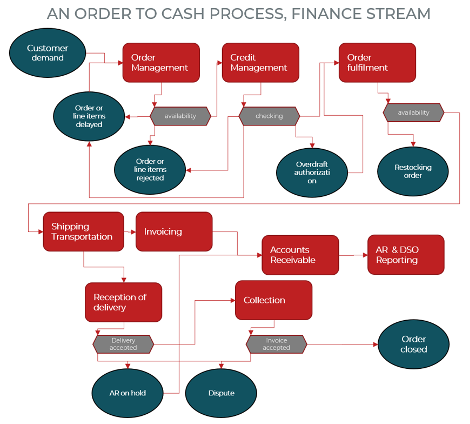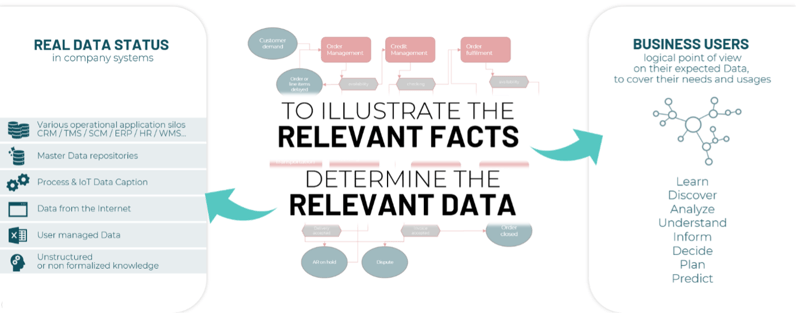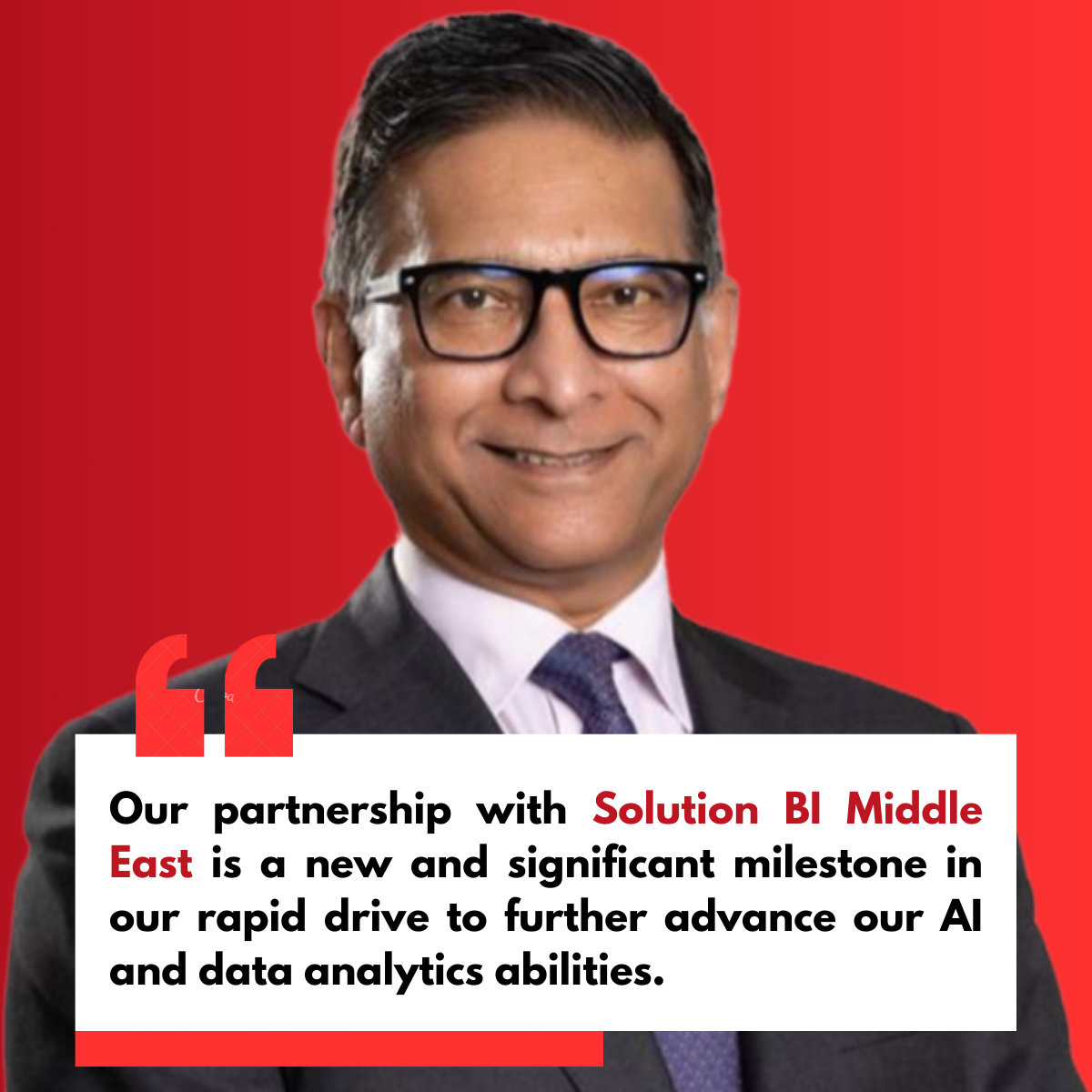by Charles Parat, Data Consulting Director
& Shayan Goulam Abas, Chief Revenue Officer - Solution BI NorAm
PROCESS INTELLIGENCE :
understand the business, its objectives, its processes
and how data flows through the systems.
As we’ve said in our writings on the BI value cycle, it all starts with accounting for business challenges from the broadest perspective. However, one way to understand the day-to-day reality of a business is to observe the chain of operations of its various activities: its processes.
There are many other factors to take into account in order to be able to recommend improvements, or even transformations, of business activities, but the mapping of a process can reveal a lot about its relative effectiveness, both in general and in specific situations, across the various operations it involves.
As a reminder, business intelligence aims to provide a person within a company with the level of information that they need to take the best course of action. Whether that person in question focuses on operations, tactics, or strategy, the concept of BI remains the same. The criticality of the expected information depends, of course, on the various levels of action and decision-making.
Actual processes can be similar to generic models or extremely specific to the particular business sector, or even to the company itself.
Let’s take for example a process that appears generic, like the process for transforming customer orders into payment receipt: “order to cash.”
It’s important to note that while this process appears generic, it may not work the same way for a particular company. It’s just an example.

With this process, the company may encounter many issues related to measuring performance or risks, as well as opportunities for continuous improvement, or even transformation.
Some users will want to see indications of overall performance, such as reduced payment lead times for orders (days sales outstanding, or DSO); others will measure more specifically the speed and quality of order processing; others still will focus on the efficiency of payment collection. Each user has their own key information that they’re seeking and each will have their own set of data that’s relevant for evaluating that indicator.
The data available must always be qualified in relation to useful measurements and you must be careful with data collected in contexts and for purposes that differ from the way you intend to use them
People often find that they just don’t have enough of the data they might need to calculate their key indicators. In that case, they can aim to expand the digitalized scope of the process to include the capture of the necessary data.

Unsurprisingly, with this approach, people sometimes discover operations or ways of doing things that are counterproductive and clearly require a new way of thinking, correction, adaptation, or even a total transformation.
To go about that, they can rely on “best practices,” particularly based on the experience of consultants. Most management consulting firms and publishers of integrated software, like ERP software developers, rely on such best practices.
Thus, the foundation for effective leadership is based on in-depth knowledge of processes, which are themselves effective and thus adapted to the needs of the company, and which generate relevant data that will enable the production of highly informative indicators.
Three customer case studies that demonstrate the value of process intelligence
by Shayan Goulam Abas,
Chief Revenu Officer, Solution BI NorAm
The mission of our practice is to detect opportunities for the transformation of financial and operational processes. Our projects go as far as recommending and structuring transformation projects that take into account many parameters based on a single existing process and its evolution, parameters that include the strategy, goals, resources and skills, tools, and, of course, data. Whether it’s to determine new ways of management using indicators, streamlining through best practices, or even implementation of new software tools, like an ERP system, our team first thinks about business efficiency.
As such, naturally, we support our colleagues belonging to teams implementing analysis and management software solutions during the scoping and specifications phases of their projects. This helps establish and secure a more productive connection between the people on the business side and the teams in charge of carrying out the projects. The overall vision provided by our specialty also helps us construct with our clients true agile transformation roadmaps that our implementation teams can rely on to constantly deliver more business value and new services.
We can illustrate the relevance of this expertise for our clients with three real-life business case studies.
An NGO that prepared specifications for the creation of a management application complained that our development team didn’t really understand their line of work; this was in spite of the fact that our team is known for its expertise with user experience in management applications, as well as for its masterful understanding of the underlying technologies.
Our project manager asked one of our consultants to help him figure out where there was a disconnect between the NGO’s business and our team. Our consultant, who is a veteran of process studies and benchmarking, immediately identified the type of standard process corresponding to the client’s business and launched a gap analysis workshop with the teams involved.
As a result, the steps of the process were mapped out, and the NGO and development team got on the same page. The acceptance scenarios for management dashboards were immediately carried out in line with needs.
A company that’s a leader in its market for sporting goods was having trouble keeping to monthly account closing deadlines as required by stakeholders, in spite of numerous efforts and new software tools that had been implemented.
During its scoping work, our team detected a few glaring anomalies in the multi-level, collaborative closing process and convinced our client that the entire process needed to be revamped. The analysis revealed several options with very different levels of difficulty and lead times for implementation. The necessary transformation, including change management, couldn’t be carried out in one fell swoop; we had to create a 12-month roadmap to reach an optimal target, which was actually more ambitious than the original project. Thus, with continuous delivery over 12 months, we were able to leverage “quick wins,” as well as carry out more complex transformations relating to organization and establishing roles and skills involved in finance procedures, both for the parent company and its entities.
Suggested reading:
Business Intelligence in 3 steps
Data Glossary : let's clear things up!




